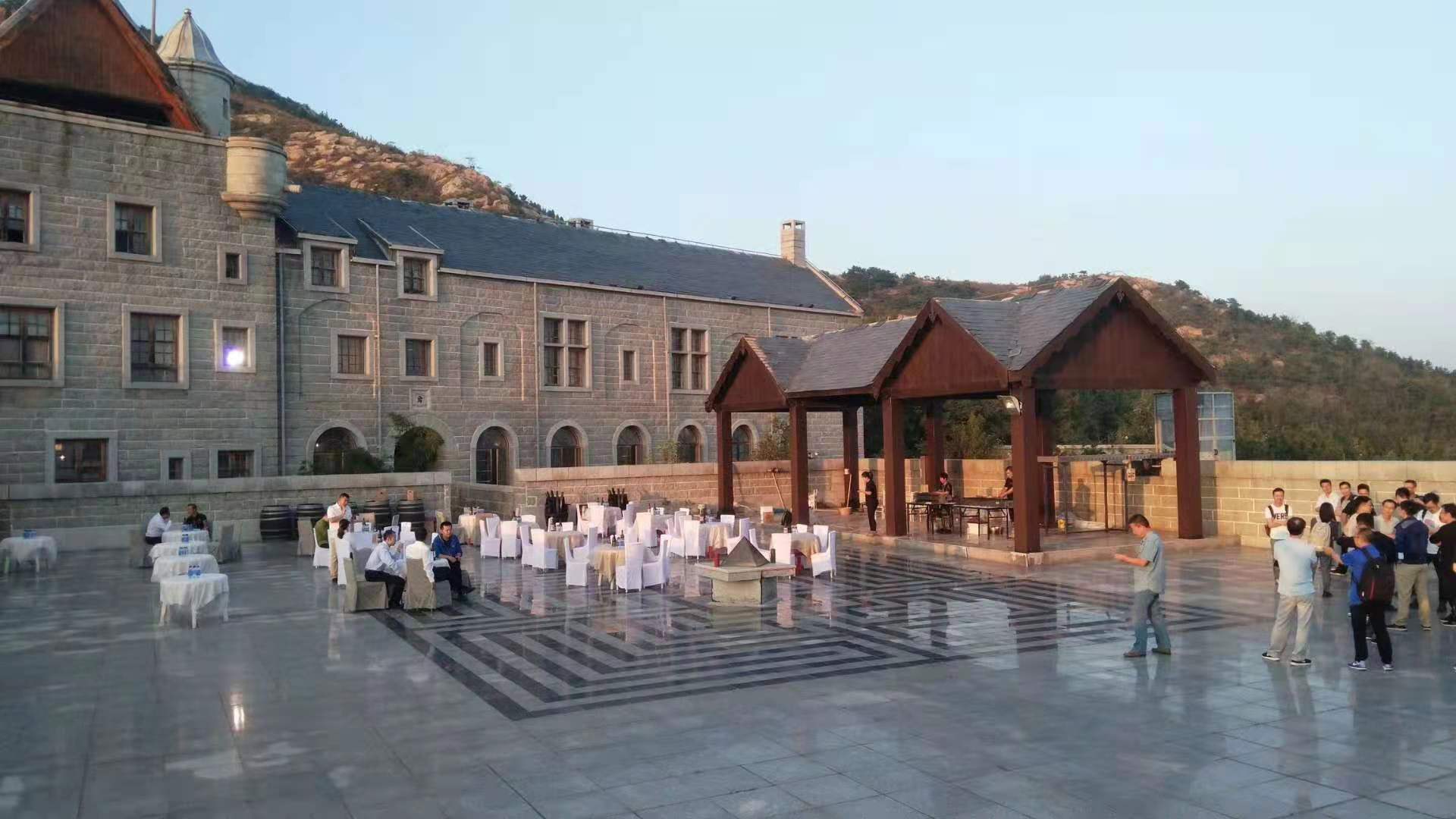(This article first appeared in my newsletter last October.)
When it comes to the Gaudy Wineries of China Hall of Fame, Treaty Port aka The Scottish Castle, landed on the right side of the line. I’m not among those outraged at China wineries that copy French, Italian or Spanish styles, especially given how often Chinese restaurants overseas feature dragons, the Great Wall et al in their designs.
I like Treaty Port in Qiushan Valley, a 15-minute drive from Yantai airport, because it didn’t just execute a blueprint, but also imbued some spirit, often with Scottish characteristics, into the operation. Plus, this is the airport pick-up vehicle.
Owner Chris Ruffle is a wine pioneer in Qiushan, having put down roots some 15 years ago. Since then, others have popped up, with Runaway Cow and the vineyards of Lafite’s Longdai operation within sight.
I visited last fall at Ruffle’s initiation, to check out the release of four new tipples and re-acquaint myself with a winery I first went to a decade ago.
Unlike Runaway Cow and it’s five star-ish vibe, Treaty Port feels more like a bed and breakfast. I stayed in the “Baron’s Room”, complete with four-post bed and views across the valley. During free moments, I circumvented narrow spiraling staircases to check the artwork, perused the billiards room, library and retail shop, and observed the winery through a wall of plexiglass. It felt like a “make yourself at home” kind of place.
My last breakfast was in the kitchen, bigger than some Beijing restaurants, where the chef filled me with scrambled eggs, sausage and pancakes topped with blueberries and powdered sugar.
I’ve been a bit unfair to Treaty Port over the years, partly due to the reputation of Shandong, including Yantai, as a haven for blending imported bulk wines with local ones and for creating spinoffs on famous brands–Penfolds, Lafite et al–that even when technically legal are obviously misleading. And due to my early experiences with sub-par wines from there, usually made before people started to wait much longer to harvest and get better fruit.
But three World Marselan Day tastings in Beijing last year saw Treaty Port wines score well with consumers, especially after given an hour or so to “breath”, displaying an elegance that eludes some bigger ripper fruit-bomb-y labels from further west.
Earlier that year, I took bottles of Treaty Port Marselan Petit Verdot and five other Chinese wines to dinner with the owner of a handful of Bordeaux chateaux. He wanted to try some local vino and that Petit Verdot stood out. He ended up taking the rest home of the bottle and messaged me the next day that it was drinking even better after a night’s sleep.
Treaty Port is managed by relative newcomer Andy Zhang and we tasted four new products, all under screw cap, the night before the launch party. This was wise given the heavy toasting at that bash.
Castle Red is 50% Cabernet Franc backed by Cabernet Sauvignon (32%), Merlot (10%) and Shiraz (8%). Fresh cherry with a slight woody aroma; a bit “chewy”; easy to drink. Rmb220.
The Prince Petit Verdot 2014. Rich dark cherry, chocolate and cocoa, with a hint of tobacco. Elegant supple wine, with a nice mouthfeel and soft tannins. Includes 5% Arinarnoa grapes. Rmb680.
(That was my go-to wine during the launch party, especially when forced to “ganbei” / bottoms up. I knocked back at least two bottles.)
Drunken Beauty is off-dry Grenache Noir (45%), Merlot (40%) and Sangiovese (15%). Fresh berries–think raspberries and cherries–and red rose aromas. It’s sweet but not sticky, with nice bing cherry character. And initially soft with light tannins at the finish. I can imagine newcomers to wine enjoying this. Rmb260.
(I just know people are going to say this wine is “for the ladies” although lots of men have a sweet tooth. We need to stop this pigeonholing, it only serves to reduce the potential customer base by half.)
Brandy. Aged 12 years in French oak and with a Merlot infusion. It pours electric fuschia. Lots of light caramel-y maple syrup sweetness up front, then a fairly heavy finish with a spiced green character. rmb580.
Some photos from the trip:
Grape Wall has no sponsors of advertisers: if you find the content and projects like World Marselan Day worthwhile, please help cover the costs via PayPal, WeChat or Alipay.
Sign up for the free Grape Wall newsletter here. Follow Grape Wall on LinkedIn, Instagram, Facebook and Twitter. And contact Grape Wall via grapewallofchina (at) gmail.com.
